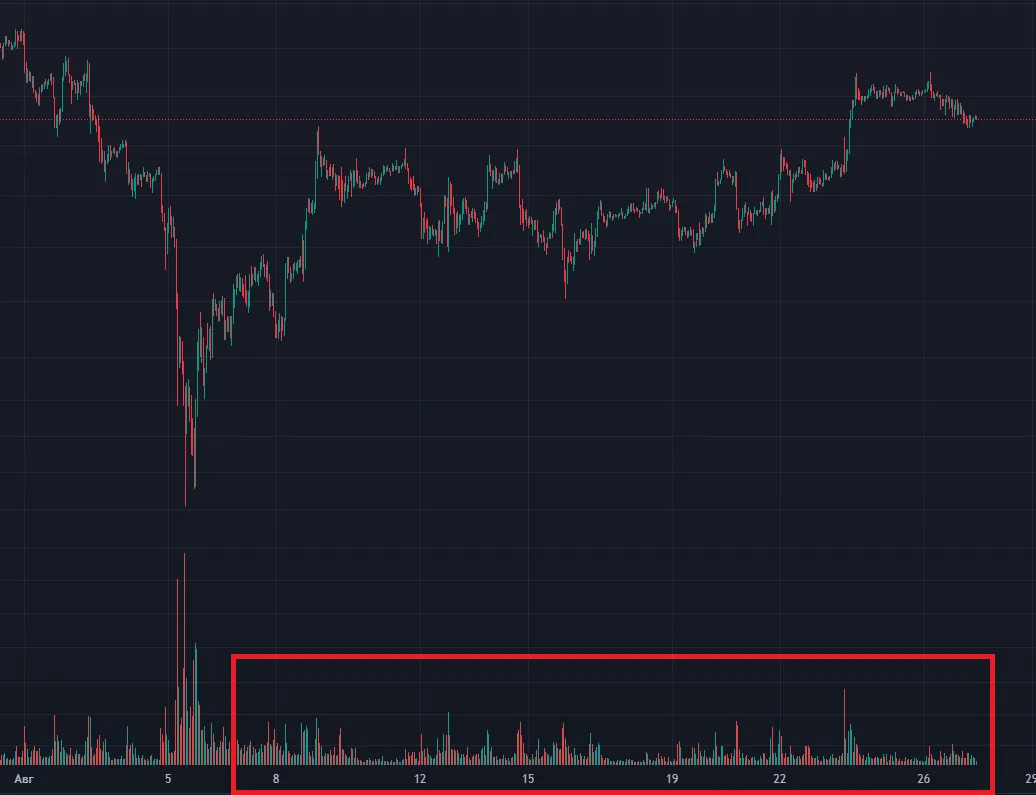
Cryptocurrency trading volume - what it is and how to use it in 2024
Cryptocurrency trading volume is a key indicator, it needs to be understood and analyzed to effectively invest in digital assets. This indicator provides information about liquidity, activity and the general state of the crypto market.
Trading volume - what is it?
This is not just a set of digital data, but a kind of “pulse” of the market, reflecting the activity of traders and investors. It allows you to look into the future of cryptocurrency, telling you where the price is moving and how strong the demand is.
On Coinmarketcap, that “bible” of cryptocurrencies, you will find a section dedicated to the trading volume of the last 24 hours. This is not just a number, but a powerful signal that can tell you a lot.

Chart with trading volume indicator
Why this indicator is important
Trading volume plays a key role in forming fair prices for cryptocurrencies. High volume reduces the likelihood of distortions caused by large investors (whales) and helps to achieve a price equilibrium that satisfies both buyers and sellers. Low trading volume can make it difficult to establish a fair price and lead to slippage - the difference between the expected and actual transaction price.
What affects the trading volume?
The cryptocurrency market is a living organism that reacts to external factors:
-
Bullish or bearish trend: During periods of market growth (bull market), trading volume increases as investors look to capitalize on the growth. During down periods (bear market), trader activity decreases and trading volume decreases.
-
Global phenomena: News about cryptocurrencies (launching new projects, announcing partnerships or changes in regulations) can drastically change the market sentiment, stimulating or, on the contrary, restraining activity.
-
Investor sentiment: Optimistic investors trade more actively, increasing volume, while pessimistic investors prefer to wait.
How to use trading volume in cryptocurrency trades
Information about trading volume is a valuable tool for making trading decisions. Its analysis allows you to:
-
Analyze trends: An increase in volume indicates a growing demand for cryptocurrency, which can signify potential growth. A decrease in volume, on the other hand, can indicate a drop in interest and a possible drop in the price in dollar terms.
-
Identify reversals: A sharp increase in volume can signal a trend change when the price starts moving in the opposite direction.
-
Confirm Signals: Trading volume can be used to confirm other technical signals, increasing the likelihood of accurately predicting price movement.
Trading volume should be considered as an auxiliary indicator in combination with other fundamental and technical aspects when making trading decisions. An integrated approach will help to more effectively assess the risks and opportunities in the world of cryptocurrencies.
Basic indicators and strategies
There are several indicators that utilize trading volume. Here is a list of the most commonly used ones:
-
Momentum momentum: An increase in volume indicates that there is real demand behind the cryptocurrency. This can drive prices higher. But it’s important that this volume is stable.
-
Spikes and depletion: Volume spikes can indicate short-term momentum, either up or down. They can often be seen before a correction, when the “steam train” loses momentum.
-
Balanced Volume: Volume changes can be associated with price movements. Analyzing these changes can help you understand how strong the current trend is.
-
Index of Funds Flow (IFM): This metric (0-100) uses volume to determine if the market is overheated or, conversely, “oversold”.
Trading volume and cryptocurrency price
Significant trading volume is often associated with higher prices. The more traders actively buy cryptocurrency, the higher the probability of its growth in value. However, it is worth considering that volume is not the only determining factor. The general atmosphere in the market, the balance of supply and demand, and the activity of participants also play a key role.
Trading volume and liquidity
It is important to distinguish between volume and liquidity. Volume represents the total amount of transactions over a given period, while liquidity indicates the amount of assets that can be quickly bought or sold at the current market price. Usually, high trading volume indicates high liquidity, which simplifies the trading process.
When liquidity is low, sharp price fluctuations may occur, creating opportunities for arbitrage trades.
Conclusion
The key to understanding market dynamics lies in trading volume. It allows you to assess the demand for cryptocurrency, its liquidity and recognize potential opportunities for profitable trading.
The Veles platform offers a volume filter in coins and USDT. Our algorithms can track abnormal increases in trading volume in an asset and make trading decisions based on that. For better performance, this feature should be used in conjunction with other financial instruments.
Frequently Asked Questions
- What insight does cryptocurrency volume analysis provide?
Cryptocurrency volume is the number of traded volume in coins for a given period of time. This indicator gives an understanding of how much interest and liquidity the asset has.
- How does the traded volume of a coin affect the price?
Above-average trading volume is due to increased interest in an asset, which is why the price increases due to increased weakness in sellers. Trading volume below the average indicates a lower interest among traders and a further decline in price.
- What factors affect cryptocurrency trading volume?
Cryptocurrency trading volume is affected by factors such as global events, sentiment of major participants, and regulatory changes. It is important to have a combination of factors and not be subject to emotions when making financial decisions.